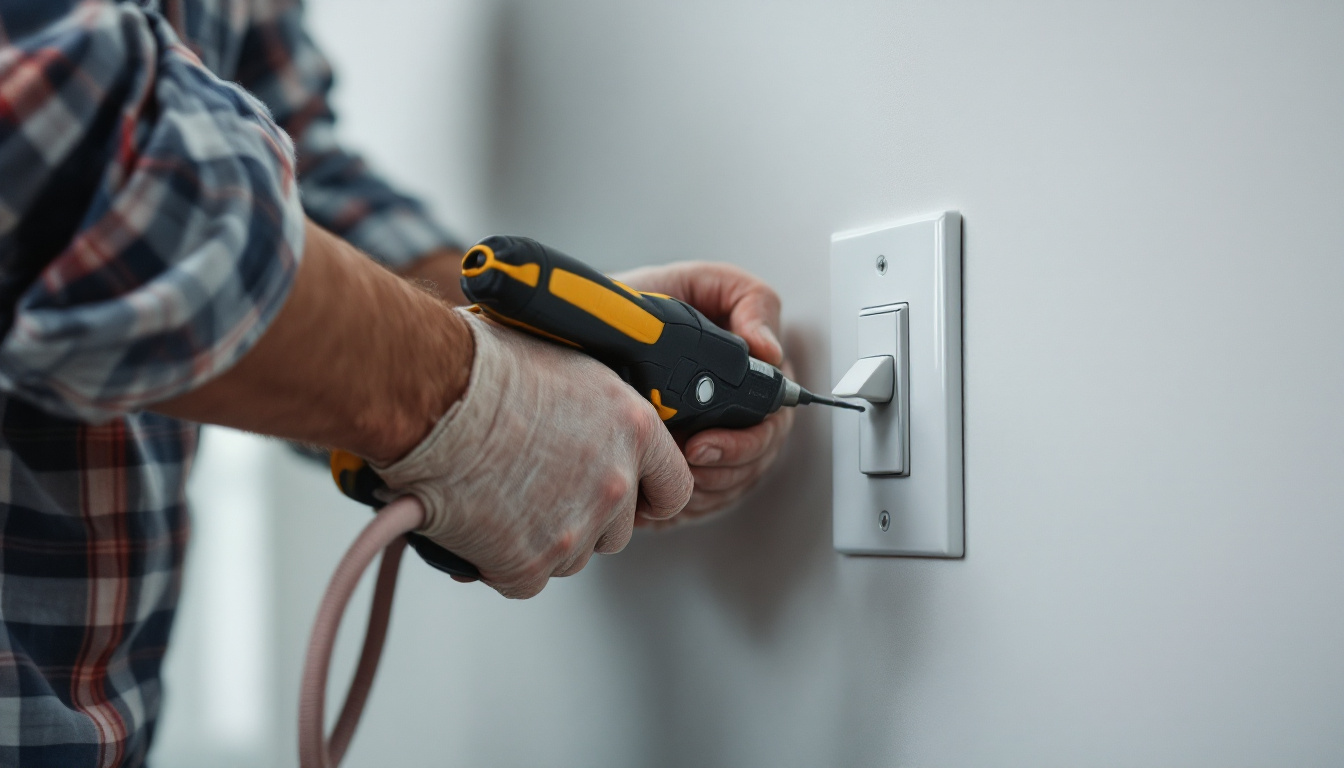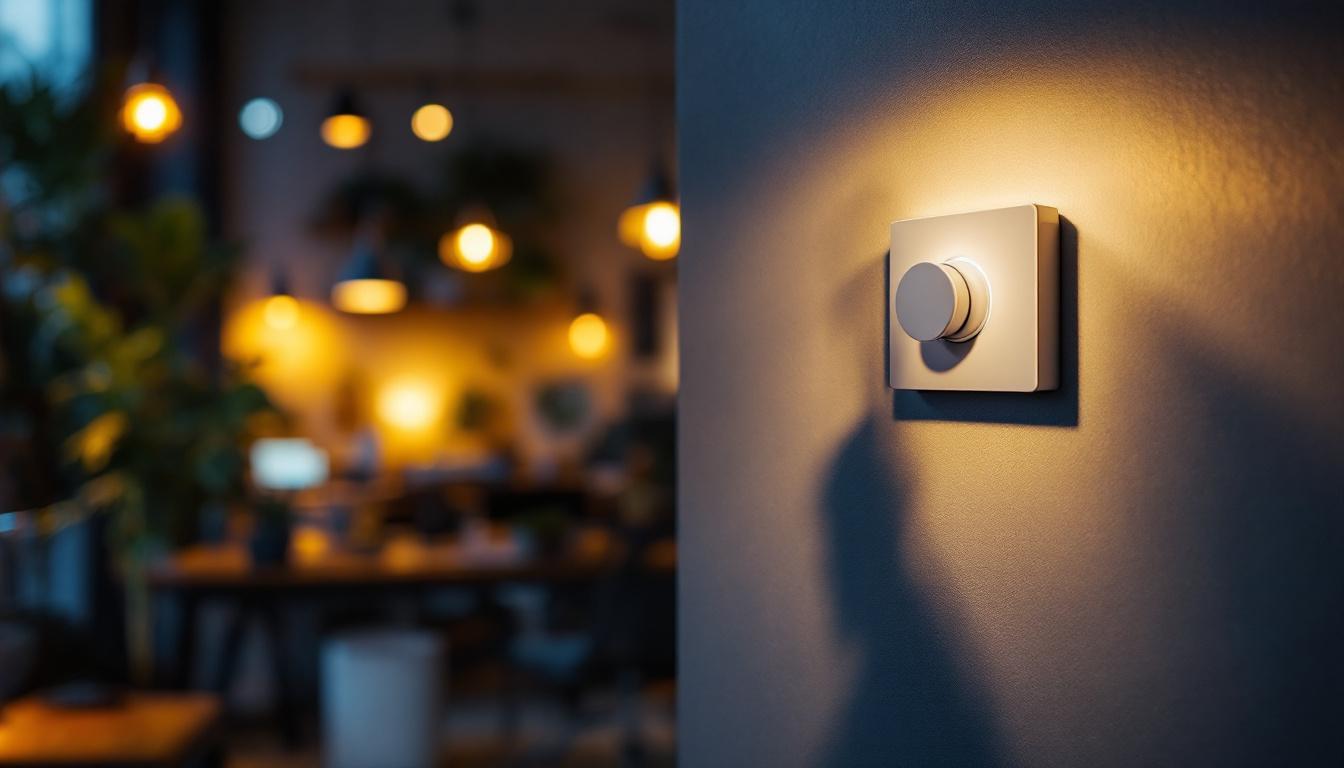
Lighting contractors play a crucial role in the design and installation of lighting systems, ensuring that spaces are both functional and aesthetically pleasing. One of the essential components in many lighting setups is the 3-way rocker switch. While these switches offer convenience and versatility, there are common mistakes that contractors often make when integrating them into their projects. This article will explore these pitfalls and provide insights on how to avoid them.
The 3-way rocker switch is designed to control a single light fixture from two different locations. This feature is particularly useful in larger spaces, such as hallways or staircases, where access to light controls from multiple points is beneficial. The switch operates using a mechanism that allows for the connection of two separate switches to one light fixture, enabling seamless control from either end. This functionality not only enhances convenience but also improves safety by ensuring that areas like staircases are well-lit from both the top and bottom.
Despite its straightforward functionality, the installation and wiring of a 3-way rocker switch can be complex. Understanding the underlying principles is essential for lighting contractors to avoid common mistakes that could compromise safety and efficiency. Moreover, the aesthetic appeal of a well-installed rocker switch can elevate the overall look of a room, making it an important consideration for both functionality and design.
One of the most frequent mistakes made by lighting contractors involves incorrect wiring. The 3-way switch system requires a specific wiring configuration to function properly. Miswiring can lead to lights that flicker, do not turn on, or operate inconsistently. It is crucial to understand the role of each terminal on the switch and how they connect to the light fixture and power source. In addition to the technical aspects, contractors should also consider the type of light fixture being used, as some fixtures may have specific requirements that could affect the wiring setup.
Contractors should familiarize themselves with the wiring diagram for 3-way switches. Typically, there are three terminals: one common terminal and two traveler terminals. The common terminal connects to the power source or the light fixture, while the traveler terminals connect the two switches. Ensuring that these connections are made correctly is vital for the switch to operate as intended. Furthermore, using color-coded wires can help simplify the installation process, allowing for easier troubleshooting in the future if issues arise.
Another common oversight is neglecting the grounding requirements of the 3-way rocker switch. Grounding is essential for safety, as it helps prevent electrical shocks and reduces the risk of fire hazards. Many contractors may overlook this step, especially if they are working in older homes where grounding systems may not be up to code. The importance of grounding cannot be overstated, as it serves as a critical line of defense against electrical faults.
To ensure proper grounding, contractors should connect the ground wire to the green screw on the switch. Additionally, they should verify that the grounding system of the entire electrical circuit is intact and compliant with current regulations. This attention to detail can significantly enhance the safety of the installation. It is also advisable for contractors to educate homeowners about the importance of grounding, as this knowledge can empower them to recognize potential issues in their electrical systems and seek timely repairs. By fostering a culture of safety and awareness, contractors can contribute to more secure living environments for their clients.
Selecting the appropriate 3-way rocker switch for a specific application is crucial. Many contractors make the mistake of using a switch that is not rated for the intended load or environment, which can lead to premature failure or safety hazards.
Every switch has a load rating that indicates the maximum wattage it can handle. Using a switch with an inadequate load rating can result in overheating and potential failure. Contractors should always check the specifications of the lighting fixtures they are controlling and ensure that the switch can handle the load without issue.
Furthermore, compatibility with the type of lighting technology being used is essential. For example, LED fixtures often require specific types of switches to function correctly. Using a standard switch with an LED fixture may result in flickering or buzzing, which can be frustrating for clients. Understanding the nuances of different lighting technologies will help contractors make informed decisions. Additionally, some modern switches come with features like dimming capabilities or smart technology integration, which can enhance the functionality of the lighting system. These advanced options can provide greater control over the ambiance of a space, allowing users to customize their lighting experience based on their preferences or activities.
In addition to load ratings, environmental factors should also be considered when selecting a 3-way rocker switch. For outdoor applications or areas with high humidity, using a switch that is rated for wet or damp locations is essential. Failure to do so can lead to corrosion and malfunction over time.
Contractors should also consider the aesthetic aspects of the switch. In residential applications, clients may prefer a certain style or finish that complements their decor. Offering a variety of options can enhance client satisfaction and ensure that the installation meets their expectations. Moreover, the placement of the switch can also impact the overall design of a room. Thoughtful positioning can make a switch more accessible and convenient for users, while also contributing to the visual flow of the space. For instance, placing switches at standard heights and in logical locations can improve usability, especially in high-traffic areas like hallways or kitchens. By taking these factors into account, contractors can provide a more comprehensive service that not only meets functional needs but also aligns with the aesthetic vision of their clients.
Proper installation techniques are vital for ensuring that a 3-way rocker switch functions correctly and safely. Many contractors overlook essential practices that can lead to issues down the line.
One often-neglected aspect of installation is the importance of labeling wires and documenting the setup. When working with multiple switches and fixtures, it can become confusing to remember which wire connects to what. Labeling each wire during installation can save time and frustration during troubleshooting or future modifications.
Additionally, providing clients with documentation of the installation can be beneficial. This documentation should include wiring diagrams, switch locations, and any specific instructions for future maintenance. Such transparency fosters trust and ensures that clients feel informed about their lighting systems. Furthermore, detailed documentation can serve as a reference for any future electrical work, making it easier for other contractors to understand the existing setup without needing to decipher the wiring themselves.
After installation, testing the system is a critical step that should never be overlooked. Many contractors may assume that everything is functioning correctly without conducting thorough tests. Testing should include checking each switch’s operation, ensuring that the lights respond as expected, and verifying that there are no flickering or buzzing issues.
In addition to functional testing, contractors should also check for any signs of overheating or unusual sounds during operation. Addressing these issues before completing the job can prevent callbacks and enhance client satisfaction. Moreover, it’s wise to educate clients on how to operate their new switches effectively, including any unique features or settings. This not only empowers them to use their systems confidently but also reduces the likelihood of misuse that could lead to problems in the future. By taking these extra steps, contractors can ensure a higher quality of service and a more reliable installation overall.
Effective communication with clients is a cornerstone of successful lighting installations. Many contractors fail to educate their clients about the operation and maintenance of 3-way rocker switches, which can lead to misunderstandings and dissatisfaction.
Clients may not be familiar with how 3-way switches operate, especially if they are accustomed to traditional single-pole switches. Taking the time to explain how the system works, including how to troubleshoot common issues, can empower clients and enhance their overall experience.
Contractors should also discuss the importance of using the correct bulbs and fixtures with the installed switches. Educating clients about compatibility can prevent future problems and ensure that their lighting system functions optimally.
Setting realistic expectations is another critical aspect of client communication. Contractors should discuss the potential limitations of the 3-way rocker switch system, including any quirks that may arise. For instance, if the lighting fixtures are dimmable, it is essential to inform clients about the type of dimmer switches that should be used to avoid flickering.
By fostering open communication and setting clear expectations, contractors can build strong relationships with their clients and reduce the likelihood of misunderstandings or dissatisfaction.
The 3-way rocker switch is a valuable tool for lighting contractors, providing flexibility and convenience in lighting control. However, avoiding common mistakes related to wiring, switch selection, installation practices, and client communication is essential for ensuring successful outcomes.
By understanding the intricacies of 3-way switch systems and prioritizing safety, compatibility, and effective communication, lighting contractors can enhance their service quality and client satisfaction. Continuous education and attention to detail will help contractors navigate the complexities of lighting installations, ultimately leading to more successful projects and happier clients.
Don’t let common mistakes hinder the success of your lighting installations. Choose LumenWholesale for your 3-way rocker switch needs and benefit from our commitment to quality and value. Our spec-grade lighting products are designed to meet the highest industry standards, ensuring you get reliable, high-performance lighting for every project. With unbeatable wholesale prices and free shipping on bulk orders, you can trust us to provide the best value without any hidden fees. Elevate your lighting projects with the perfect blend of quality, affordability, and convenience. Visit LumenWholesale today and experience Wholesale Lighting at the Best Value.

Discover how motion sensor garage lights are revolutionizing the lighting industry with their energy efficiency, convenience, and enhanced security features.

Discover the top benefits of LED lamp dimmers for lighting contractors, from energy efficiency and cost savings to enhanced ambiance control and extended bulb life.

Discover how commercial lighting solutions can transform your projects by boosting efficiency and reducing costs.

Discover the frequent pitfalls lighting contractors encounter in light conversion projects.